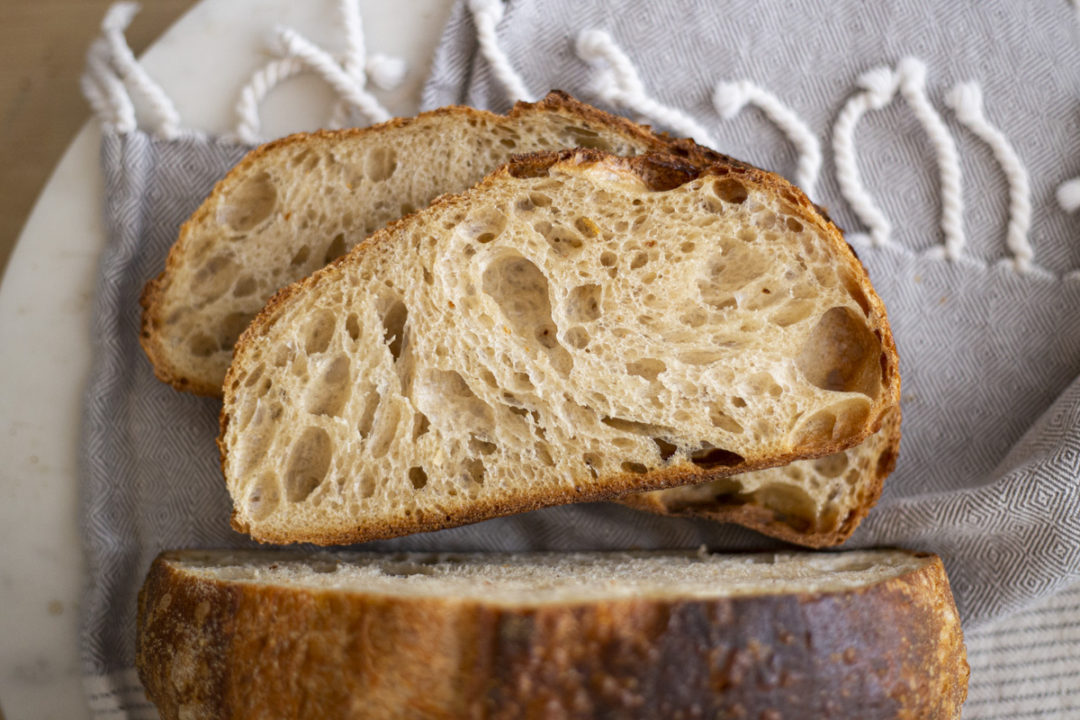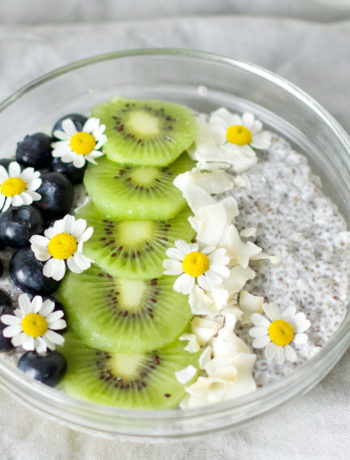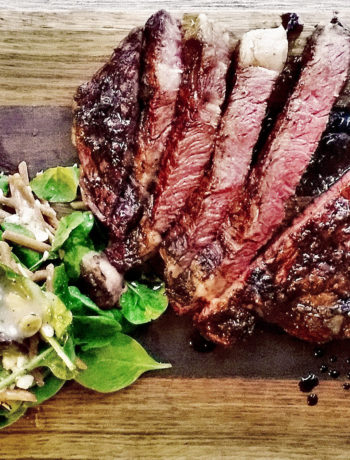Bread making is a science that has been around for millennia. And when we think of sourdough bread in particular, we tend to assume it’s just another style of bread… Which, on one hand, is the truth. But really, sourdough is a way of making bread that dates back thousands of years. By the time commercialized yeast became available in the 1940s, many a housewife (or househusband) had already mastered bread making. How you ask? By the goodness that is sourdough.
Most bread available today is made with commercialized yeast – which most of us are familiar with (dehydrated and ground, then neatly packaged into jars or envelopes and available at the grocery store). This yeast was developed out of convenience. It helps bread rise quickly and thus is very efficient in the bread business. Sourdough bread, however, is leavened by using a live sourdough culture, made of multiple strains of wild yeast and bacteria. This is what brings us here – what sets sourdough bread apart.
It Starts With A Starter
A sourdough starter is the backbone of sourdough bread, and is our first stop in this sourdough journey! Without it, sourdough wouldn’t have its distinct tangy flavor or hearty texture. We’ve put together a guide on STARTING YOUR OWN STARTER that takes just a few minutes of work each day. If you’d rather not make your own, most bakeries & grocery stores will sell you some (it’s likely you have a friend or neighbor that will give you some of theirs). Once you have a starter that is strong and healthy, it can be used in just about any sourdough recipe you can find.
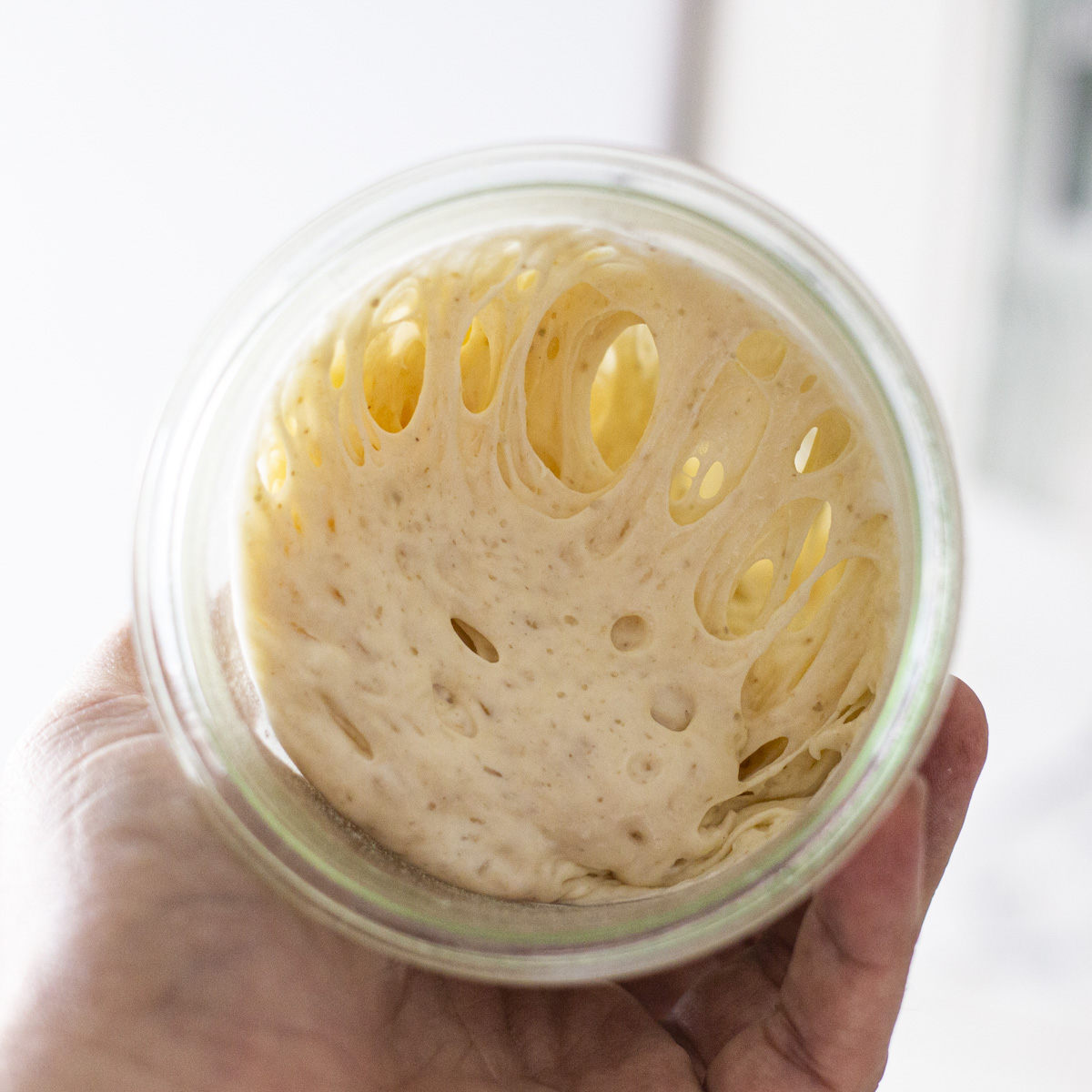
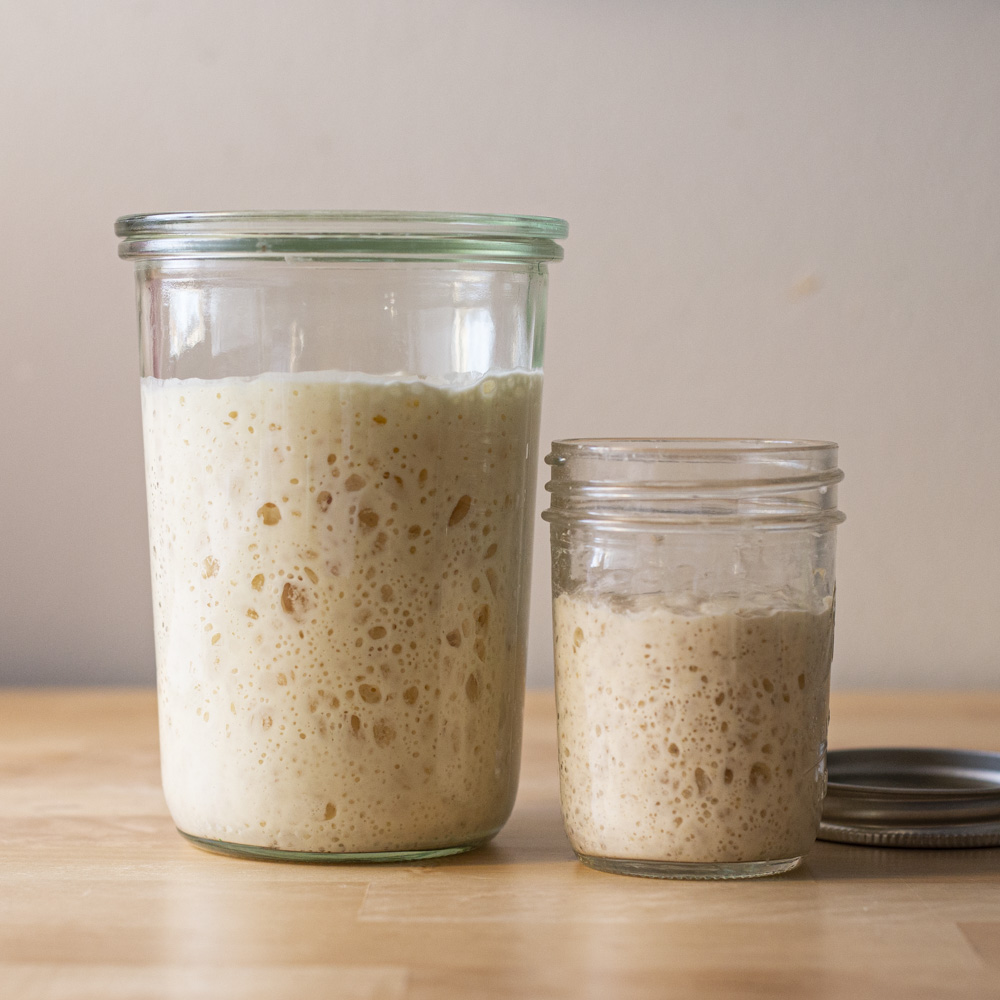
TOOLS & SUPPLIES FOR BAKING SOURDOUGH
- A FOOD SCALE: Vital for consistent baking – a food scale will be your new best friend.
- A MIXING BOWL: Whether you’re using your KitchenAid mixer or getting in there to mix your dough by hand, a mixing bowl is a must. Both a heavy-bottomed glass bowl or stainless steel are solid choices.
- A PROOFING CONTAINER: After mixing your dough and beginning stretch and folds, placing your dough into a container that has clear sides is useful to help gage the changes in volume as your dough rises. We love a good clear Cambro container or glass bowl for this.
- A BOWL COVER: During proofing, you don’t want the surface of your dough to dry out. Cover the bowl with a flexible bowl cover (or flour sack towel) to ensure the moisture stays inside.
- BOWL SCRAPER & BENCH SCRAPER: A bowl scraper, made with a rounded edge, helps you to gently guide the dough out of your bowl after proofing. Then using a bench scraper helps you to create a nice round dough for your bench rest and/or cold ferment.
- PROOFING BASKET OR BOWL: For your final rise/cold ferment, using a bowl close to the final shape of your loaf is important. We prefer a banneton for its breathability or a medium glass bowl with a flour sack towel lining the inside. Here’s where you can reuse your bowl cover, too.
- PARCHMENT PAPER: Essential for transferring dough from your counter to the oven and back again, we have half sheet sized precut parchment available that will change your bread baking game. Visit gygi.com to shop.
- BREAD LAME: Seconds before sending your dough into the oven to bake, scoring your dough allows for control over your oven spring and where the steam gets released.
- ENAMELED DUTCH/FRENCH OVEN: As our technique test suggested, this isn’t absolutely crucial to get great bread, but it sure is handy in consistency while baking, helping prevent a too-dark crust and is a tool you can use in endless applications.
ONTO THE RECIPE
It would be no exaggeration to say there are thousands of recipes floating around the internet for sourdough bread. Recipes that come from generations of family, dear friends, expert bakers from around the world, and recipes that are developed at home after various bouts of trial & error. We want to help you be able to confidently read through any recipe and feel ready to tackle it. It is safe to assume that most recipes will consist of the following steps:
Refreshing your starter and building a levain – a starter needs to be at a peak point in development before it can be baked with. In most cases, this occurs 4-8 hours after the starter is fed. For more information on sourdough starter and building a levain, click here for our guide.


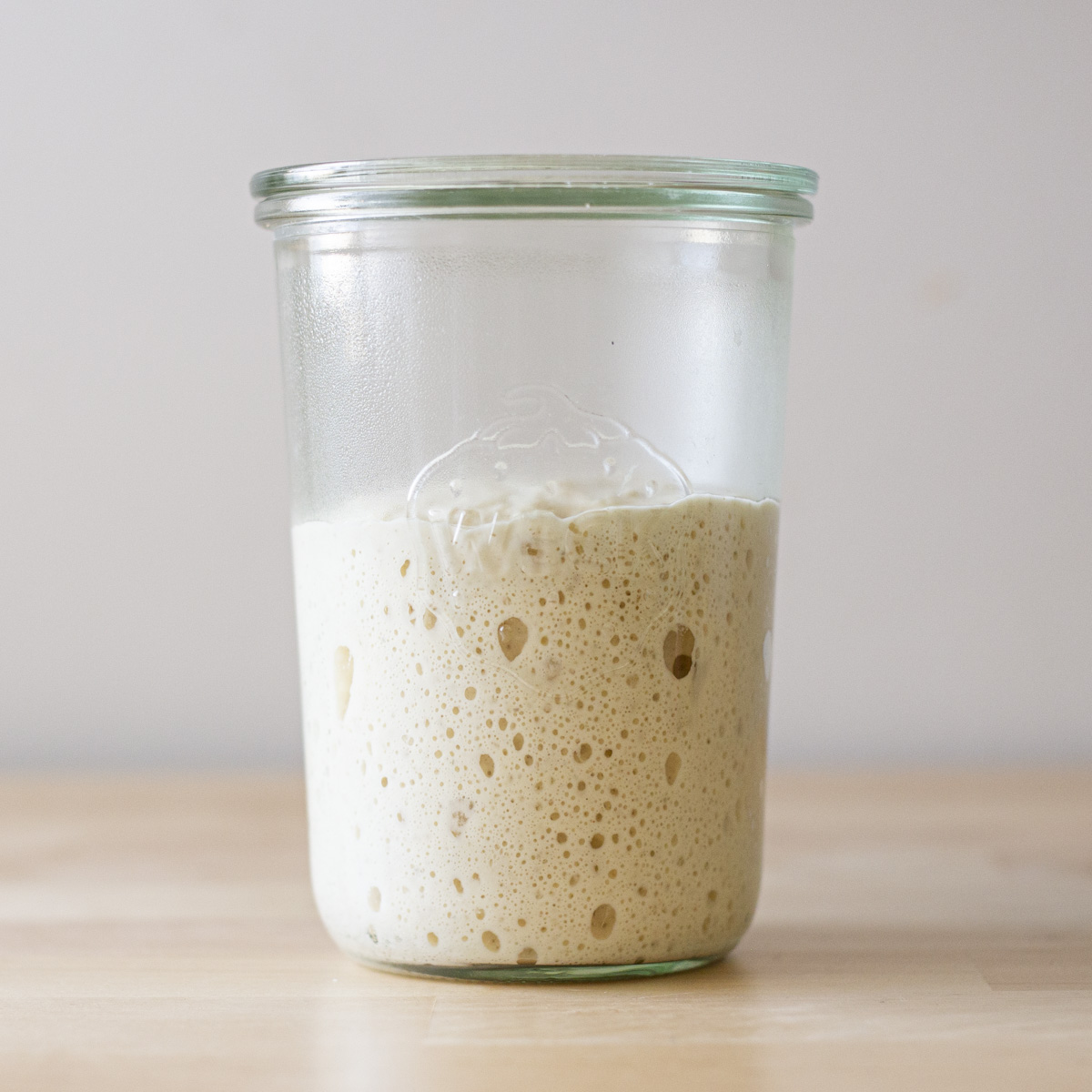
Mixing your dough – once the starter is at its peak point with a nice buildup of carbon dioxide, your dough ingredients are mixed together and the magic begins. *Some recipes will call for an autolyse period. Refer to our glossary below for information about autolyse.
Stretch & folds – just before actually letting your dough rest and rise, a series of actions called stretch & fold are performed to help develop a strong gluten structure during the rise. Some recipes will call for one or two and others will ask for 4-6, this can be adjusted based on personal preference and how you want your final bread to perform.
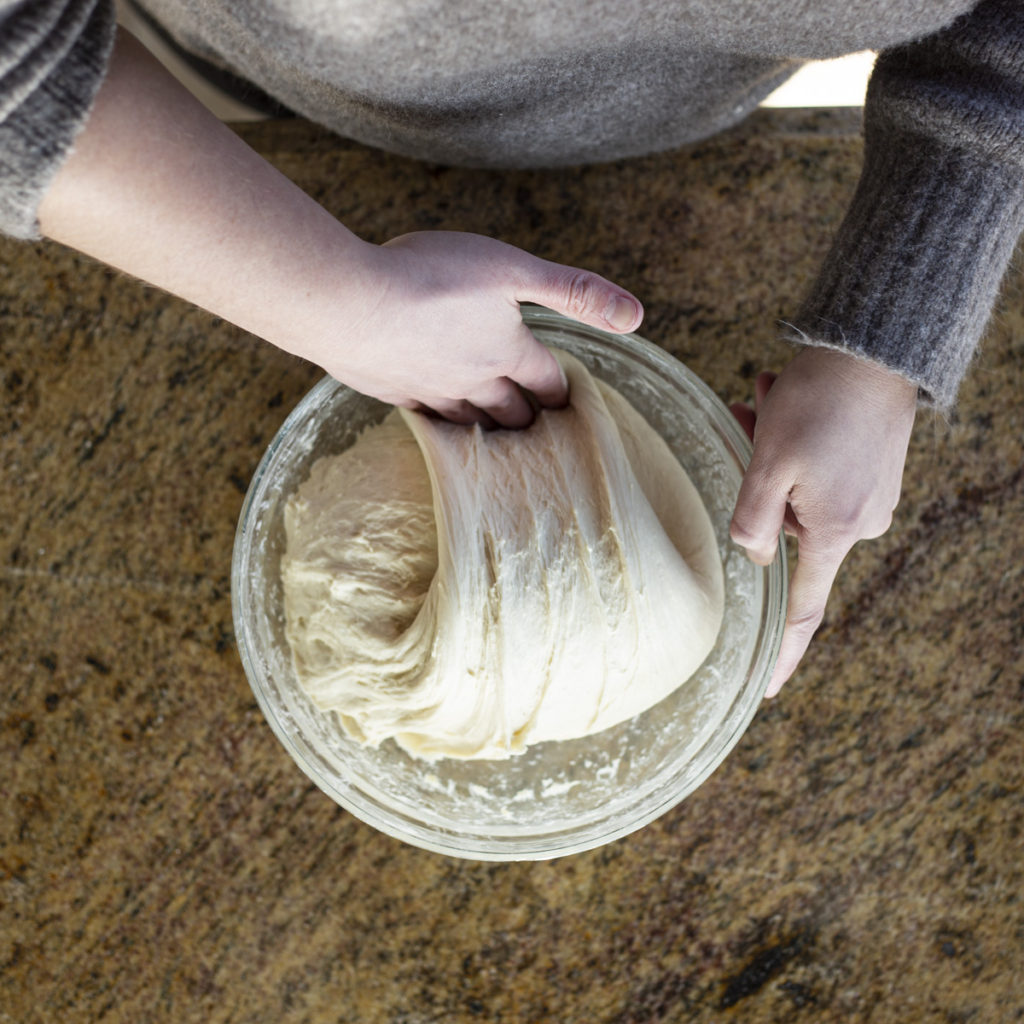
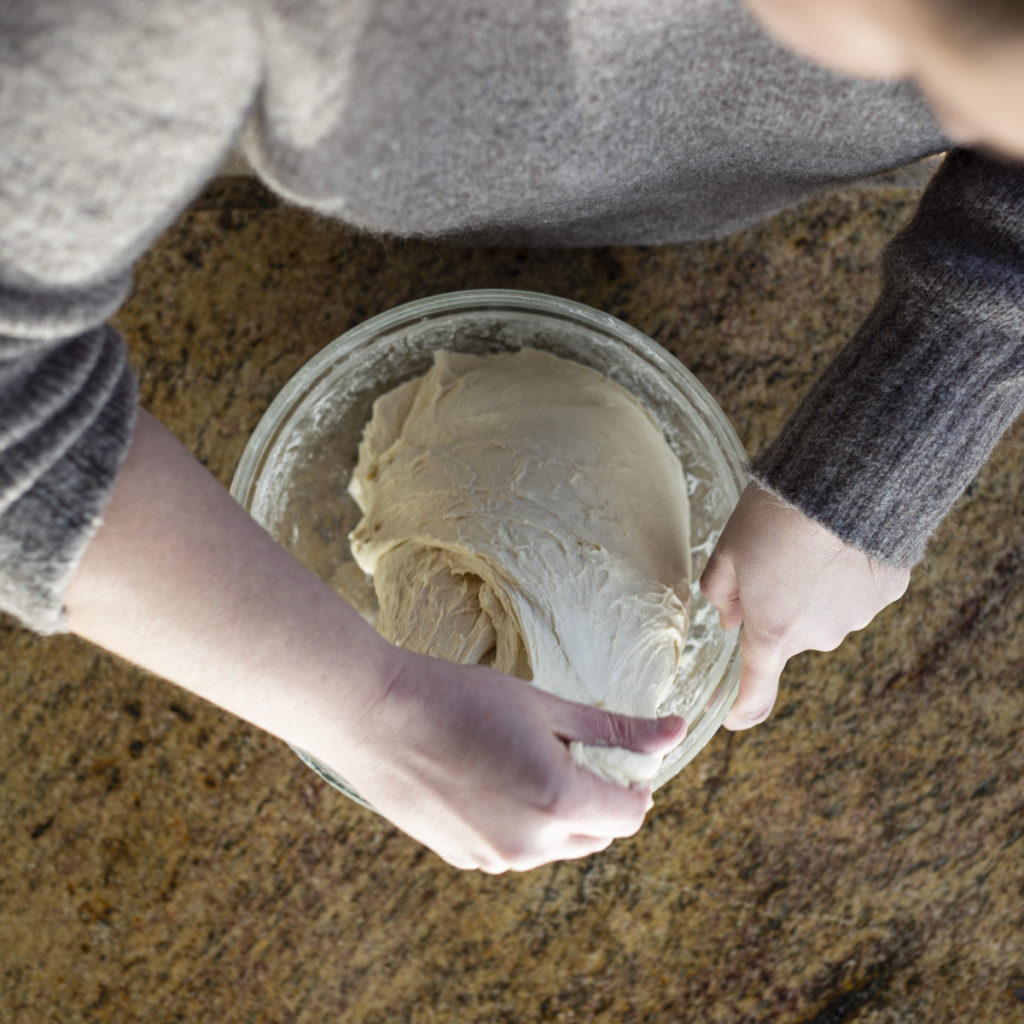
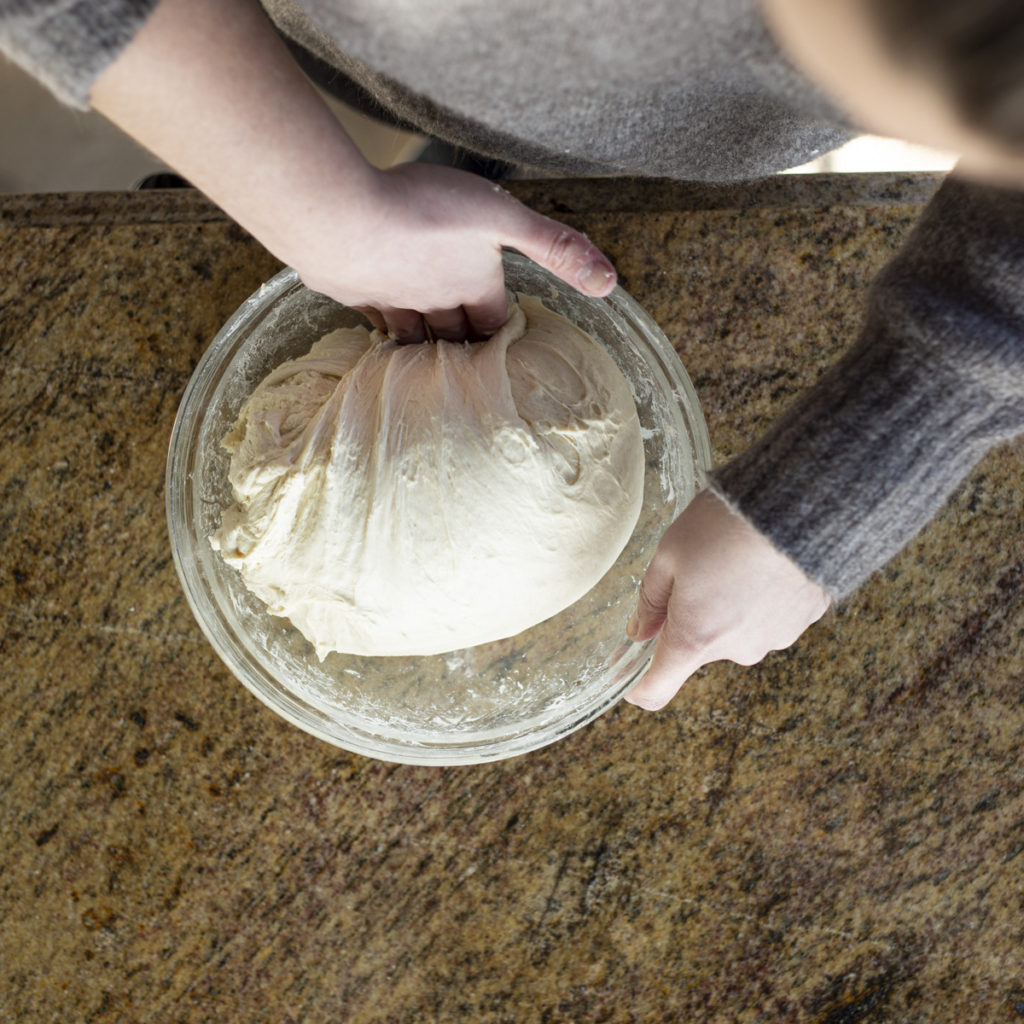
Bulk ferment – this refers to the first rise, after the stretch & fold process but before you actually shape your dough into a loaf. In a warm environment, bulk ferment can take about 3-5 hours to be ready.In cooler environments, it can take closer to 8-10.
Shaping – once the dough has risen to its ideal volume (be careful not to overproof your dough or you can end up with a hockey puck instead of bread), it’s time to shape your loaf. Some recipes call for just shaping once and others call for a brief shape, period of rest (known as a bench rest), then a final shape.
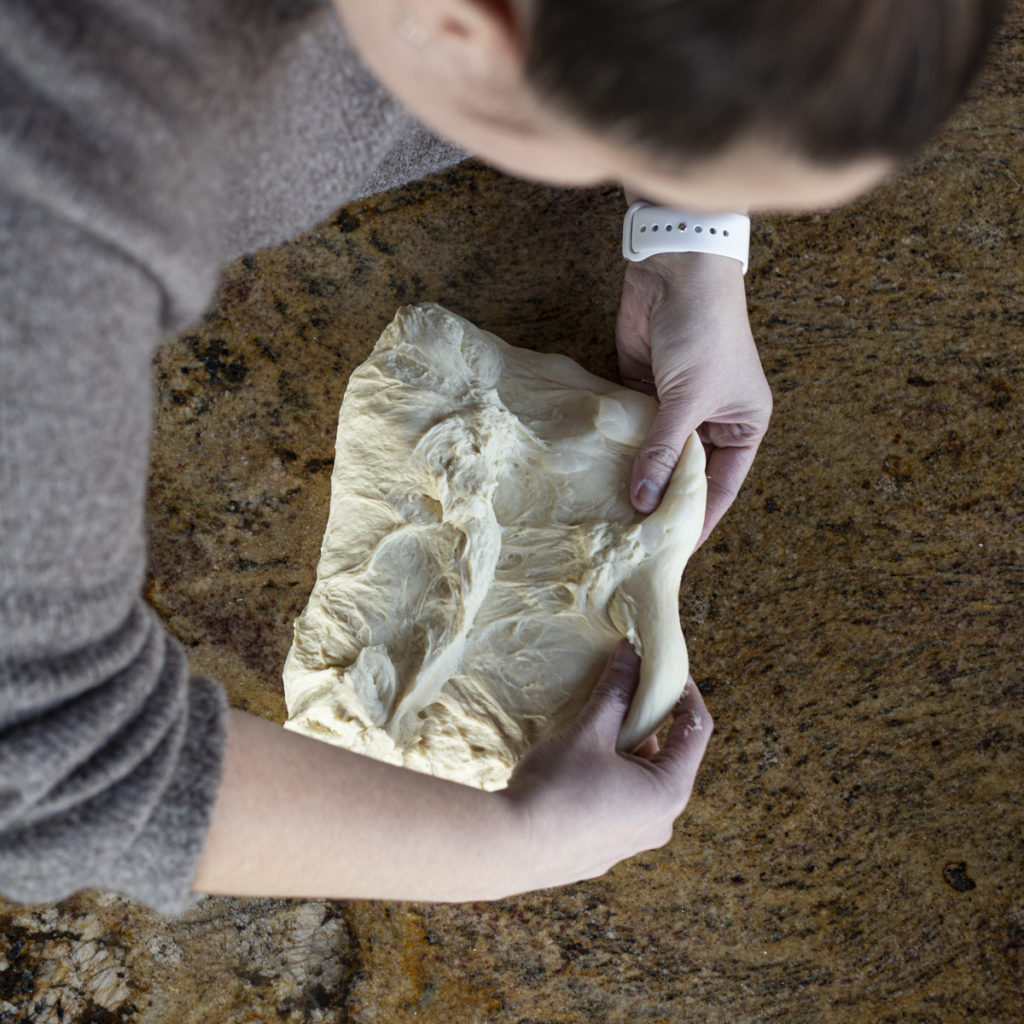
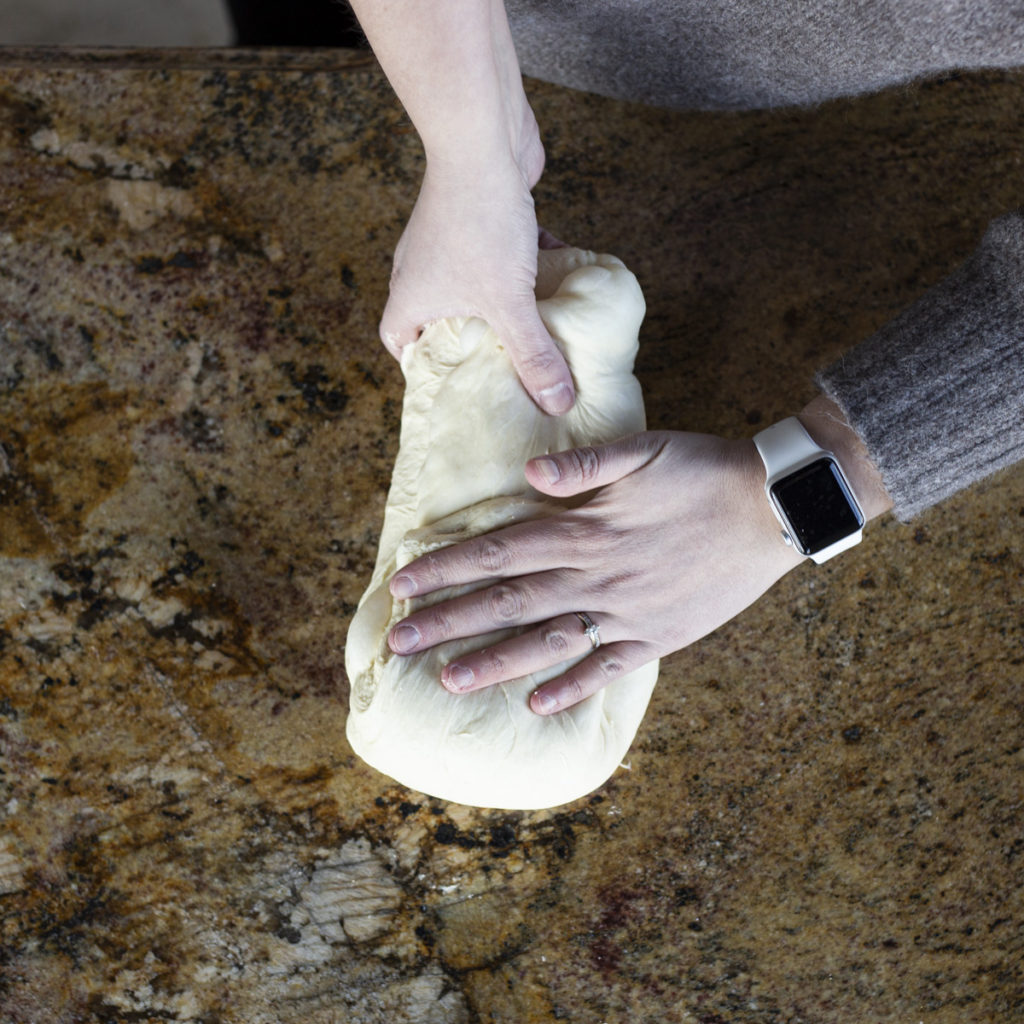
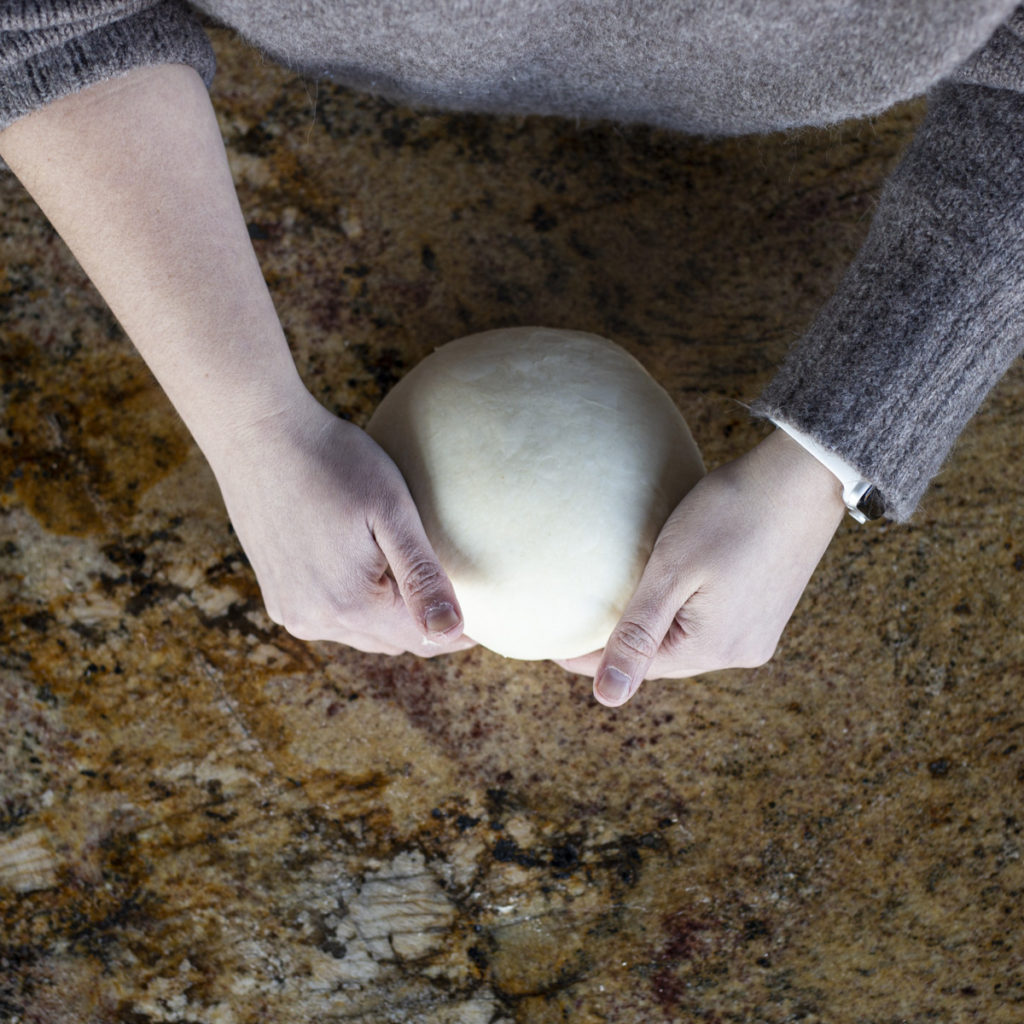
Cold ferment – after shaping, your cold ferment time (or 2nd rise) will take place in the refrigerator. This can last anywhere from 2 to 72 hours and only increases the sourdough flavor and open crumb structure of your final bread.
Scoring – right after the cold ferment comes scoring. This is done in order to control how the dough springs up during baking and steam is released. Without scoring, you run the risk of a dense dough that was unable to stretch open as much as it could.
Baking – finally, you get to bake your bread! Traditionally the dough is placed in an enameled Dutch or French oven and then baked in a very hot oven up to 500ºF.
CREATING A SOURDOUGH BAKING SCHEDULE
Being sure your starter is ripe before baking is absolutely necessary. This can often lead to confusion when trying to plan exactly when you’ll be baking your bread. Scheduling conflicts are sure to arise, so we want to help you feel comfortable in scheduling sourdough whenever it works for you. If you work Monday through Friday from 9-5, a weekday sourdough recipe probably works best for you. Or if you are a weekend baker only, a more in-depth recipe would suffice.
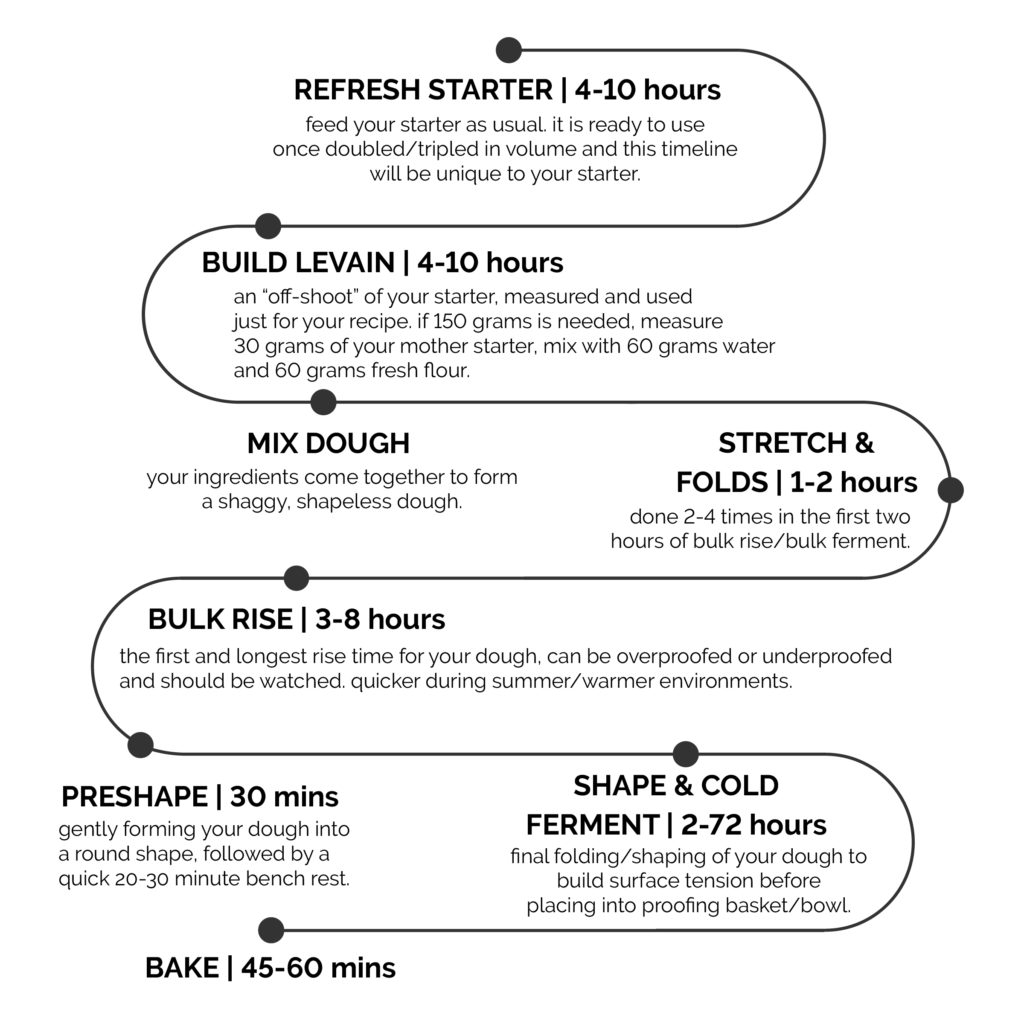
GLOSSARY OF SOURDOUGH TERMS
- STARTER: a fermented mixture of flour & water, used to leaven bread [make-rise]. Must be fed fresh water & flour to keep maintained & alive. AKA wild yeast, the mother, culture, etc.
- DISCARD: the portion of your starter that is discarded before feeding.
- HOOCH: a liquid that collects at the top of your starter, technically an alcohol given off by the yeast fermenting. Hooch development is a sign your sourdough is hungry and needs feeding.
- LEVAIN: an off-shoot of your starter, typically made to provide the exact amount needed for any given recipe that is created/fed separately from your mother starter.
- HYDRATION: the percentage of water in a recipe/starter relative to the flour by weight. For example, a recipe that calls for 100 grams of flour and 75 grams of water is a 75% hydration dough.
- AUTOLYSE: mixing the flour and water called for in a recipe and letting it rest before adding the other ingredients. Reasoning – to fully hydrate the flour, allowing a jumpstart on developing gluten structure & extensibility. Theorhetically, this should allow a bigger oven spring and more open crumb structure.
- PREFERMENT: similar to autolyse but includes the starter as opposed to only flour & water.
- STRETCH & FOLD: the action of gently stretching the dough and folding it over itself, strengthening gluten structure. Mostly done 4-6 times in 15-30 minute increments, after mixing the dough (and counts toward bulk proof time).
- BULK PROOF/BULK FERMENT: the first/primary rise/fermentation. Once mixing and stretch & folds are completed, the dough begins rising, gluten structure is built and volume & flavor begins developing during this proof. Sourdough can be over-proofed through, so this needs watching.
- PRESHAPE: when dividing a larger dough into smaller portions, or after bulk proof/ferment, but before bench rest. A gentle shaping of the dough into a round shape.
- BENCH REST: the resting & relaxing of the dough before final shape & cold ferment.
- FINAL SHAPE: after bench rest and right before cold ferment, includes folding the dough gently and building surface tension by pushing & pulling the dough on a surface, which creates a strong outer dough. After final shaping, the dough is added to a proofing basket or bowl for the cold ferment.
- COLD FERMENT: the period after shaping when the dough will rest in a refrigerator for an amount of time, usually 12-72 hours. The longer the cold ferment, the more bold your sourdough flavor will be.
- SCORING: the action of making a slit along the top of the dough before baking to allow steam to release. Done using a bread lame or razor blade.
- OVEN SPRING: the literal spring or rise of the dough during baking, almost all of the oven spring occurs during the first 10 minutes of baking.
- CRUMB: essentially the bread texture, “crumb” refers to the size & uniformity of the holes & pattern inside the bread.
RESOURCES
Lori from Lo’s Kitchen Co. has been teaching in the Gygi kitchen for a few years now, she is a master at all things bread and makes the process so simple to follow. She has a very well-put-together book on sourdough and even sells starters on her website.
Charity Lighten has an honest, easy approach to sourdough for beginners. Her classic sourdough recipe is simple to follow and yields beautiful bread.
Chef Brandon Price is a wealth of knowledge when it comes to all things sourdough and especially, incredible Neapolitan pizza dough.

